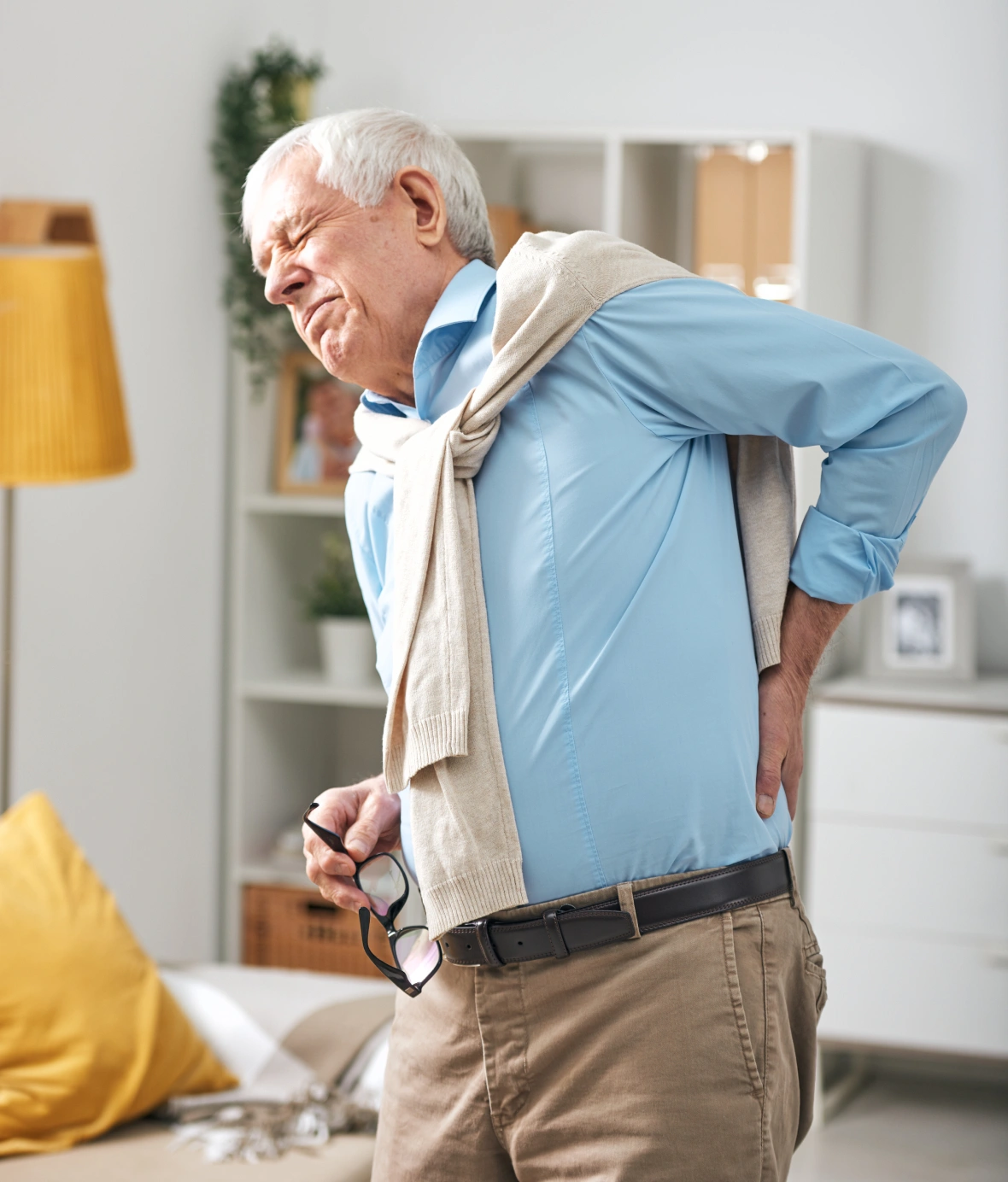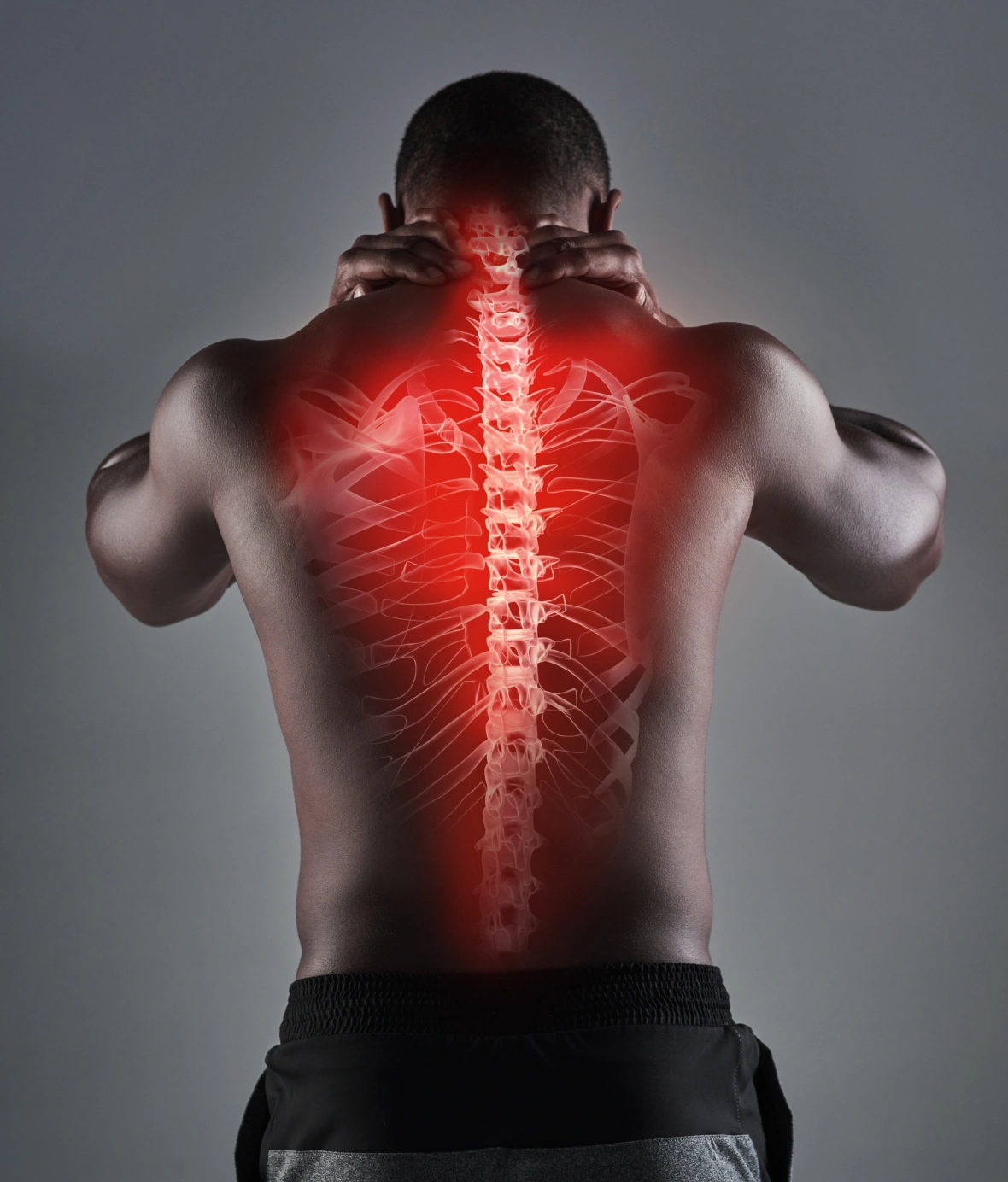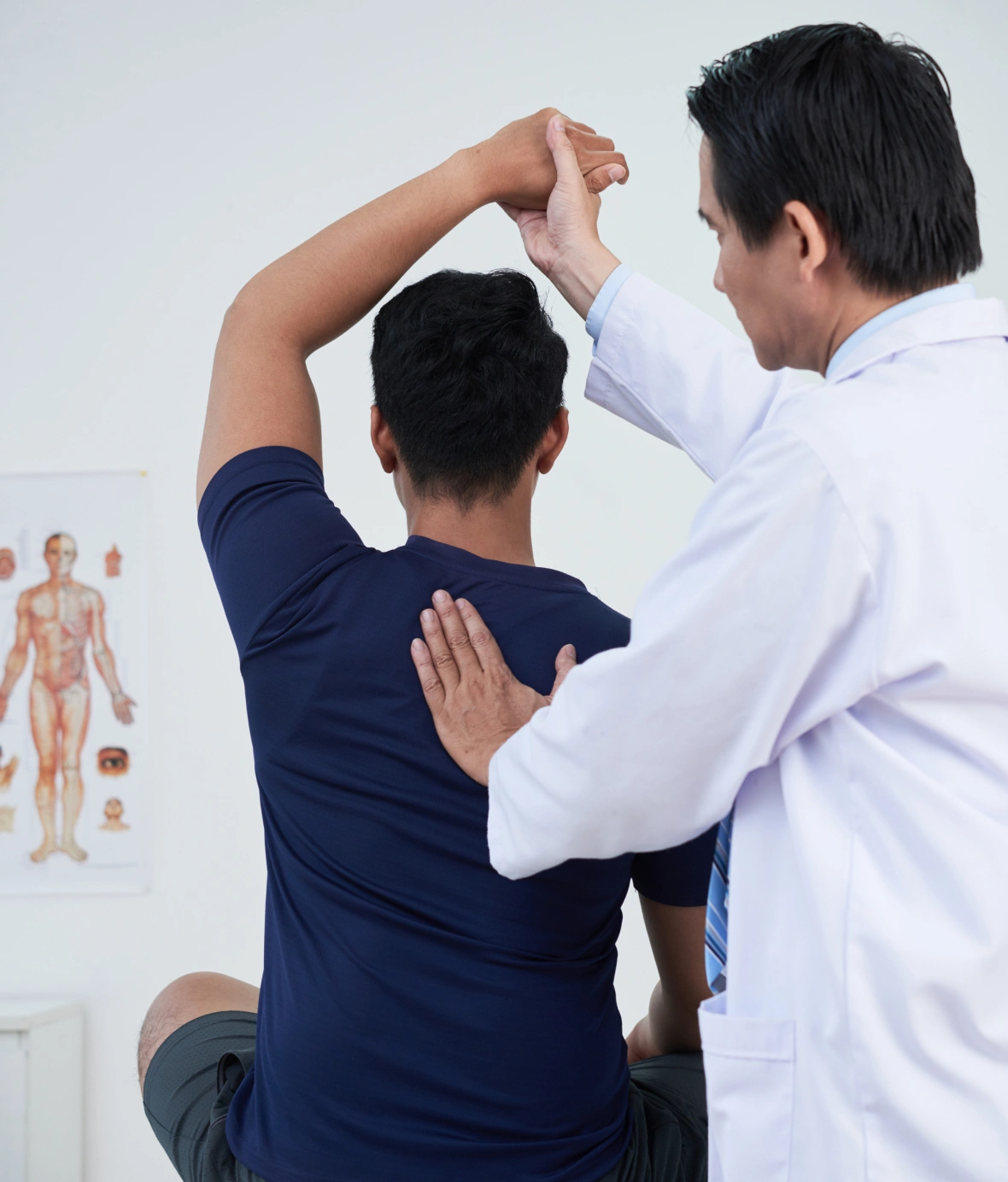Best Spinal Stenosis Treatment in Gurugram

Spinal stenosis is a condition where the spaces within your spine narrow, putting pressure on nerves and causing pain, numbness, and mobility issues. At Painflame, we specialize in non-surgical spinal stenosis treatment in Gurugram, helping patients find lasting relief through safe and effective methods.
Spinal stenosis commonly occurs due to age-related degeneration, herniated discs, arthritis, or spinal injuries. If left untreated, it can lead to chronic back pain, weakness in the legs, and difficulty walking or standing for long periods. Seeking timely care can prevent complications and improve mobility.
Our treatment approach includes chiropractic adjustments, physiotherapy, manual therapy, and posture correction to relieve nerve pressure and restore spinal function. We focus on improving spinal alignment, flexibility, and strength, ensuring long-term relief without surgery.
If you’re experiencing persistent back pain, leg weakness, or difficulty walking, our experts can create a personalized treatment plan to help you move freely and live pain-free.
Common Causes of Spinal Stenosis
Age-Related Degeneration
As the spine ages, discs lose water content and shrink, leading to a narrowing of the spinal canal and pressure on nerves. This is one of the most common causes of spinal stenosis.
Herniated Discs
A bulging or ruptured disc can compress spinal nerves, causing pain, numbness, and weakness in the back and legs. Repetitive stress, poor posture, and improper lifting techniques increase the risk.
Osteoarthritis and Bone Spurs
Arthritis in the spine leads to inflammation and bone spur formation, narrowing the spinal canal and pressing on nerves, resulting in pain and stiffness.
Spinal Injuries
Accidents, falls, or previous surgeries can damage spinal structures, leading to scar tissue or instability that contributes to stenosis symptoms.
Spinal Stenosis Symptoms – When Should You See a Specialist?
Spinal stenosis symptoms often develop gradually but can worsen over time. Seeking medical attention is important if you experience.
Common Symptoms of Spinal stenosis
- Persistent lower back or neck pain
- Numbness, tingling, or weakness in the legs or arms
- Pain that worsens when standing or walking and improves when sitting
- Difficulty balancing or coordinating movements
Serious Symptoms That Need Urgent Care
- Loss of bladder or bowel control
- Severe leg weakness or difficulty walking
- Intense pain that does not improve with rest


Effective Spinal Stenosis Treatment at Painflame
At Painflame, we use evidence-based, non-surgical treatments to relieve pain, improve mobility, and enhance spinal health. Our approach focuses on reducing nerve compression, restoring flexibility, and strengthening spinal muscles to provide long-term relief.
Our Spinal Stenosis Treatment Methods
- Chiropractic Adjustments – Corrects spinal misalignment to relieve pressure on nerves.
- Physiotherapy – Strengthens muscles, improves flexibility, and restores movement.
- Manual Therapy – Reduces muscle tension and enhances blood circulation.
- Posture Correction & Ergonomic Guidance – Helps prevent strain that worsens spinal stenosis symptoms.
- Pain Management Techniques – Uses drug-free therapies to reduce inflammation and discomfort.
Our specialists create personalized treatment plans tailored to your condition, ensuring safe and effective recovery. Book a consultation today to start your journey toward a pain-free life!.
How to Prevent Spinal Stenosis
While spinal stenosis is often age-related, you can take steps to slow its progression and reduce symptoms. Here are some expert-backed tips to maintain spinal health.
Tips for a Spinal Stenosis
Practice Good Posture
Keep your spine aligned while sitting, standing, and walking to reduce strain.
Stay Active
Low-impact exercises like walking, swimming, and yoga help maintain flexibility and strengthen spinal muscles.
Strengthen Core Muscles
A strong core supports your spine and helps prevent excessive pressure on spinal structures.
Use an Ergonomic Workspace
Adjust your chair, desk, and screen height to support proper posture and prevent spinal stress.

Frequently Asked Questions
What causes spinal stenosis?
Spinal stenosis is commonly caused by age-related wear and tear, arthritis, herniated discs, bone spurs, and spinal injuries. These conditions narrow the spinal canal, compressing nerves.
What are the first signs of spinal stenosis?
Early symptoms include back pain, leg numbness, tingling, and weakness. Pain may worsen when standing or walking for long periods and improve when sitting or bending forward.
Can spinal stenosis be treated without surgery?
Yes! Non-surgical treatments like chiropractic care, physiotherapy, manual therapy, and posture correction can relieve symptoms and improve mobility without invasive procedures.
How can I prevent spinal stenosis from worsening?
Maintaining good posture, staying active, strengthening core muscles, and using ergonomic support can slow progression and help manage spinal stenosis symptoms naturally.
When should I seek treatment for spinal stenosis?
If you experience persistent back pain, leg weakness, difficulty walking, or numbness that worsens over time, consult a specialist. Early treatment prevents further complications.

